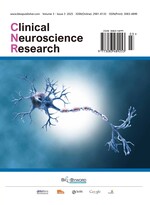Current Status and Prospects of Transcutaneous Acupoint Electrical Nerve Stimulation-Based Therapy for Pediatric Blepharospasm
Abstract
Blepharospasm is a common eyelid movement disorder that, although more prevalent in the elderly, also affects children and can significantly impair their visual function and quality of life. Conventional treatments such as medication and botulinum toxin injections have limitations, including high recurrence, strong dependency, and obvious side effects. In recent years, transcutaneous acupoint electrical nerve stimulation (TAENS), a non-invasive therapy integrating modern neuroelectrophysiology with traditional acupuncture theory, has attracted increasing attention in pediatrics. This paper reviews the pathophysiology of blepharospasm from both modern medicine and Traditional Chinese Medicine (TCM) perspectives, and systematically analyzes current research progress, acupoint selection, treatment protocols, and therapeutic outcomes of TAENS in pediatric blepharospasm. The study highlights TAENS’s unique advantages in improving efficacy, safety, and treatment compliance in children. Furthermore, it identifies current limitations such as small sample sizes, inconsistent protocols, and a lack of long-term follow-up, and proposes future research directions and technical innovations. This work provides theoretical and practical support for expanding treatment options for pediatric blepharospasm.
References
Roheen ZUR, Saleh M, Mushkani TA, 2022, Bilateral Corneal Melting in a Pediatric Patient with Severe Vitamin A Deficiency: A Case Report and Review of Literature. International Medical Case Reports Journal, 2022(15): 235–238.
Ma H, Qu J, Ye L, et al., 2021, Blepharospasm, Oromandibular Dystonia, and Meige Syndrome: Clinical and Genetic Update. Frontiers in Neurology, 2021(12): 630221.
Dong H, Luo Y, Fan S, et al., 2020, Screening Gene Mutations in Chinese Patients with Benign Essential Blepharospasm. Frontiers in Neurology, 2020(10): 1387.
Farahmand G, Magrouni H, Zolfaghari V, et al., 2022, Herpes Zoster Ophthalmicus and Encephalitis following Botulinum Toxin Type A Injection for Blepharospasm: A Case Report. Case Reports in Clinical Practice, 7(2): 58–60.
Zhang M, Huang X, Li B, et al., 2022, Gray Matter Structural and Functional Alterations in Idiopathic Blepharospasm: A Multimodal Meta-analysis of VBM and Functional Neuroimaging Studies. Frontiers in Neurology, 2022(13): 889714.
Lestingi S, Kim L, Goncalves BDSB, et al., 2023, Blepharospasm Patients after Botulinum Toxin–Sleep Approach. Sleep Science, 16(1): 38–43.
Fang TC, Chen CM, Chang MH, et al., 2021, Altered Functional Connectivity and Sensory Processing in Blepharospasm and Hemifacial Spasm: Coexistence and Difference. Frontiers in Neurology, 2021(12): 759869.
Huang XF, Hao XQ, Yin XX, et al., 2023, Functional Connectivity Alterations in the Frontoparietal Network and Sensorimotor Network are Associated with Behavioral Heterogeneity in Blepharospasm. Frontiers in Neurology, 2023(14): 1273935.
Hou Y, Zhang L, Wei Q, et al., 2022, Impaired Topographic Organization in Patients with Idiopathic Blepharospasm. Frontiers in Neurology, 2022(12): 708634.
Hao X, Huang X, Yin X, et al., 2023, Elucidation of the Mechanism Underlying Impaired Sensorimotor Gating in Patients with Primary Blepharospasm using Prepulse Inhibition. Frontiers in Neurology, 2023(14): 1105483.

